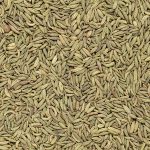
Comfrey (Symphytum spp.) derives its Latin name from the Greek word ‘symphis’ which means ‘growing together’. The plant became renowned in folklore for wound healing when the Ancient Greeks used Comfrey on the ancient battlefields to encourage torn flesh to knit or bind together. Nicholas Culpepper, the seventeenth century herbalist, prescribed Comfrey for ‘outward wounds and sores’ and ‘ruptures and broken bones’. The herb is also known as ‘boneset’ or ‘knitbone’. When boiled in water, the herb produces a sticky paste that hardens when dried.
Uses
- Comfrey contains allantoin which promotes the growth of new cells
- Can be used for a variety of external conditions including ulcers, wounds, joint inflammation, bruises, rheumatoid arthritis, swollen veins, gout, and fractures
- The safety of taking Comfrey internally is doubted by some herbalists but it has been used for bronchial problems and as an aid to digestion.
Use one of the many ointments, salves, creams or ointment.
To use Comfrey on a wound, scrape or bruise, sprinkle dried powdered leaf or root or a paste of powdered leaves. Watch Pestle Herb’s video, HOW TO MAKE A POULTICE.
Cautionary And Safety Information.
- Comfrey has previously been linked with harmful effects on the liver when taken in large amounts internally over a long period of time. Studies have linked Comfrey use to veno-occlusive disease (VOD) but it is thought that this connection is linked only to very high, repeated internal doses of root. If taking internally as an infusion only take occasionally, for a short period.
- Wash any open wound thoroughly before applying.
- Do not use if you suffer from any conditions of the liver, alcoholism or cancer.
- Do not give to any child under two years old.
- Do not use while pregnant or nursing.
N.B. This post contains links to an affiliated marketing partner. We are an Amazon Associate. Please read our affiliate disclosure.
Legal Disclaimer Concerning Products On This Web-Site
The products and the information provided about specific products on or through this site have not been evaluated by the United States Food and Drug Administration or by any other national regulatory body and are not intended to diagnose, treat, cure or prevent disease. The information provided on this site is for informational purposes only and is not intended as a substitute for advice from your physician/doctor or other health care professional or any information contained on or in any product label or packaging. You should not use the information on this site for diagnosis or treatment of any health problems or for prescription of any medication or other treatment. You should consult with a healthcare professional before starting any diet, exercise or supplementation program, before taking any medication or if you suspect you might have a health problem.


Leave a Reply